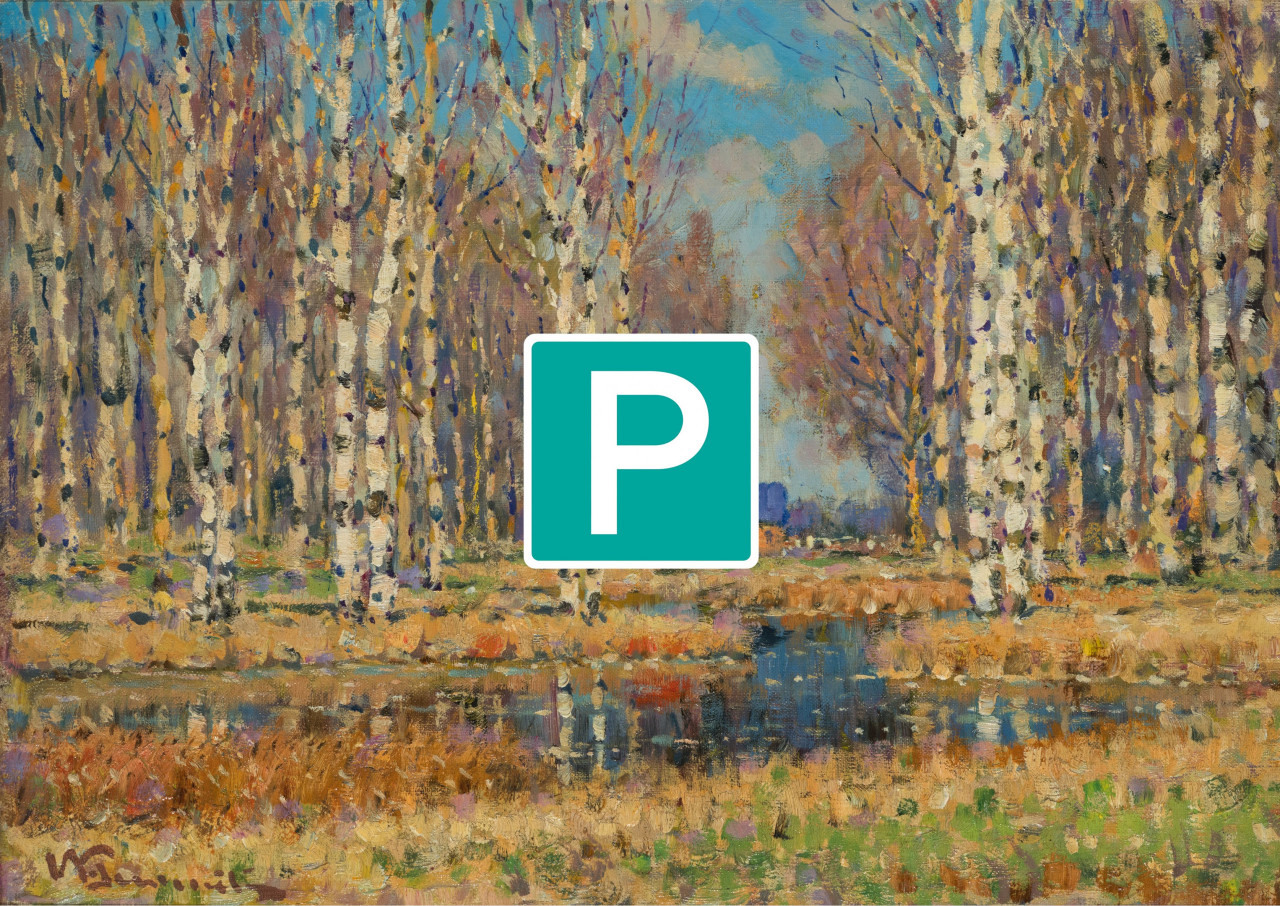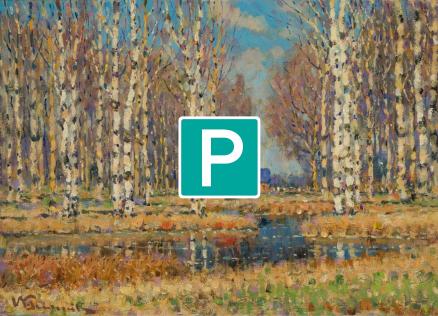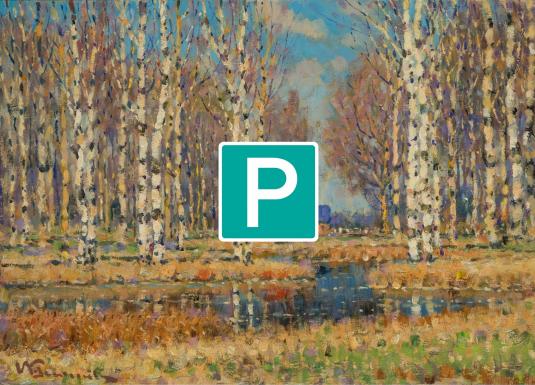Purvītis Prize
Founded in the early 2008, the Purvītis Prize was launched to amass regular and systematic information about the latest visual arts events in Latvia, promote development of new projects and original ideas, acknowledge the best achievements in Latvian professional visual arts and popularise the success of Latvian artists both in Latvia and abroad.

The prize was named after Vilhelms Purvītis (1872–1945), the grand master of Latvian painting, who was a prominent artist and art educator and won acclaim both at home and internationally.
In the context of Latvian art history as well as in the consciousness of wider circles of the society, the name of Vilhelms Purvītis has become a symbol of national identity.
The co-founder of the national school of art and pioneer of the national landscape painting, Vilhelms Purvītis was one of the all-time most influential figures in Latvian cultural and art life: the head of the Riga Art School; director of the Riga Museum of Art and founder of the collection of Latvian art; the founder and rector of the Latvian Academy of Art and the long-time head of the Landscape Workshop at the academy, as well as the Commissioner General of all the representative Latvian art exhibitions abroad during the Interbellum period.
The authority, educational work and artistic style of the prominent landscapist and Fellow of the St Petersburg Academy of Art has left an impact on several generations of Latvian artists. A wise and farsighted culture politician, Vilhelms Purvītis was an active supporter of the young artists of the time and discovered a number of talented painters who later played important roles on the Latvian art scene.
The Prize is awarded biennially to an artist or a group of artists representing Latvia with an outstanding work, which is deemed to be deeply connected to the developments of the era and forming a bridge between contemporary life, spiritual ideals and intrinsic values. The author rated highest by a panel of experts and a special international jury is selected as the winner. The Prize is the most prestigious and the most substantial art award in Latvia, comprising 28 500 EUR pre-tax.
The Purvītis Prize competition in visual arts is organised by the Latvian National Museum of Art in cooperation with the Museum Patron, SIA Alfor, and SIA Culture Project Agency ‘INDIE’ (Kultūras projektu aģentūra “INDIE”). The Purvītis Prize organisation is assisted by association Art Platform (Mākslas platforma) and P.R.A.E. Public Relations (P.R.A.E. Sabiedriskās attiecības).
The project is supported by the SIA Alfor company.
The Purvītis Prize 2023
The Purvītis Prize 2023 candidates’ exhibition is on view in the Great Hall of the main building of the Latvian National Museum of Art from 1 April to 11 June 2023. On 26 May, a seven-member international jury of art experts has awarded this year’s Purvītis Prize for outstanding artistic achievement to Latvian artist Ance Eikena, who also became the winner of the public vote according to the results at the news portal Delfi, a leading news medium in Latvia.
The Purvītis Prize 2023 candidates
A panel of independent experts for the eighth Purvītis Prize has shortlisted six artists and groups of authors for outstanding achievement in visual art of Latvia in 2021 and 2022. The candidates are Evelīna Deičmane, Ance Eikena, Kristaps Epners, Daiga Grantiņa, Daria Melnikova, Evita Vasiļjeva and Kaspars Groševs. In all, 21 artists / collectives of artists, whose works have been recognised as important events within Latvia’s visual art scene during the period from 1 January 2021 until 31 December 2022, were nominated for the final competition of the Purvītis Prize 2023.
Winners of the Purvītis Prize
The first Purvītis Prize was awarded in 2009 to Katrīna Neiburga for her video work Solitude. Artist Kristaps Ģelzis became the second winner of the Purvītis Prize in 2011 for his solo exhibition Varbūt (Maybe). The third Purvītis Prize in 2013 has won Andris Eglītis for his one-man show Zemes darbi (Soil Works). The fourth winner of the Purvītis Prize in 2015 was Miķelis Fišers for his personal exhibition Netaisnība (Disgrace). The Purvītis Prize 2017 went to a group of artists – Krišs Salmanis, Anna Salmane and Kristaps Pētersons – for their exhibition Dziesma (Song). The sixth Purvītis Prize was awarded in 2019 to artist Ieva Epnere for her personal exhibition Sea of Living Memories. Artist Amanda Ziemele became the seventh winner of the Purvītis Prize in 2021 for her solo exhibition Quantum Hair Implants. The Purvītis Prize 2023 went to Ance Eikena for her solo exhibition Our Heavenly Father.
The Jury 2023
The winner of the Purvītis Prize 2023 was named by an international jury of seven art professionals: Māra Lāce, Director of the Latvian National Museum of Art; Jānis Zuzāns, patron of the LNMA and the Purvītis Prize, Chairman of the Board of SIA Alfor; Udo Kittelmann, art theorist and curator, Director of the Berlin Nationalgalerie group of museums between 2008 and 2020; Krist Gruijthuijsen, curator and art critic, Director of the KW Institute for Contemporary Art (Berlin); Ivana Goossen, Director of Kunsthalle Praha; Christian Nagel, gallerist, co-owner of Galerie Nagel Draxler; Laura Rutkutė, Art Director of the Vartai Gallery.
The Lifetime Contribution Award
In 2019, a new award category was introduced - the Lifetime Contribution Award. The decision on which artist to bestow this award to is taken by the Purvītis Prize organizing committee. The monetary value of the prize is 10 000 EUR (not including taxes).
In 2019, the first Lifetime Contribution Award was presented to the painter Džemma Skulme (1925–2019).
In 2021, the Lifetime Contribution Award went to Maija Tabaka for her loyalty to painting throughout her lifetime and for preserving the spirit of figurative painting in Latvian art.
In 2023, the textile artist Edīte Pauls-Vīgnere became the recipient of the
prize – for over a half century’s worth of work in textile art, high in artistic quality and filled with creative energy, her dedication to experimenting and searching for innovative solutions, thus evidencing the medium’s wealth of potential for creating artistic ideas in the context of its time.


